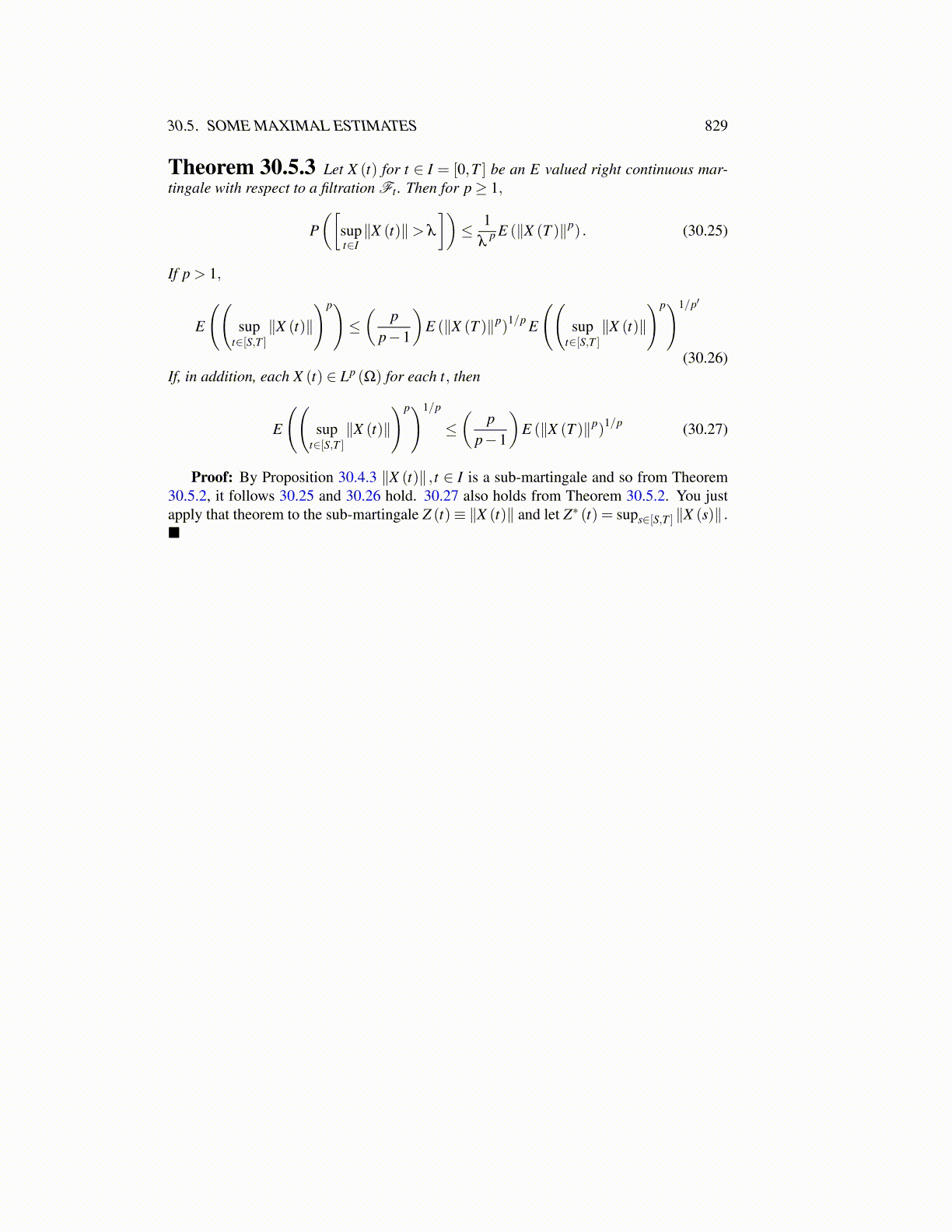
30.5. SOME MAXIMAL ESTIMATES 829
Theorem 30.5.3 Let X (t) for t ∈ I = [0,T ] be an E valued right continuous mar-tingale with respect to a filtration Ft . Then for p≥ 1,
P([
supt∈I∥X (t)∥> λ
])≤ 1
λp E (∥X (T )∥p) . (30.25)
If p > 1,
E
((sup
t∈[S,T ]∥X (t)∥
)p)≤(
pp−1
)E (∥X (T )∥p)
1/p E
((sup
t∈[S,T ]∥X (t)∥
)p)1/p′
(30.26)If, in addition, each X (t) ∈ Lp (Ω) for each t, then
E
((sup
t∈[S,T ]∥X (t)∥
)p)1/p
≤(
pp−1
)E (∥X (T )∥p)
1/p (30.27)
Proof: By Proposition 30.4.3 ∥X (t)∥ , t ∈ I is a sub-martingale and so from Theorem30.5.2, it follows 30.25 and 30.26 hold. 30.27 also holds from Theorem 30.5.2. You justapply that theorem to the sub-martingale Z (t)≡ ∥X (t)∥ and let Z∗ (t) = sups∈[S,T ] ∥X (s)∥ .■
30.5. SOME MAXIMAL ESTIMATES 829Theorem 30.5.3 Let x (t) fort € 1 = (0,T] be an E valued right continuous mar-tingale with respect to a filtration ¥;. Then for p > 1,P ([supiix > 4]) < LE (|X (T)P). (30.25)Ifp>1,Pp p / P\ 1/p'p\1/pE (ea) ) < (2; eux) )E (tan)If, in addition, each X (t) € LP (Q) for each t, then\/p£( (sp ixeoi) | <( P )euxryy'” (30.27)te[S,T] p-l(30.26)Proof: By Proposition 30.4.3 ||X (t)||,¢ € J is a sub-martingale and so from Theorem30.5.2, it follows 30.25 and 30.26 hold. 30.27 also holds from Theorem 30.5.2. You justapply that theorem to the sub-martingale Z(t) = ||X (t)|| and let Z* (¢) = sup,js.7y ||X (s)||-a